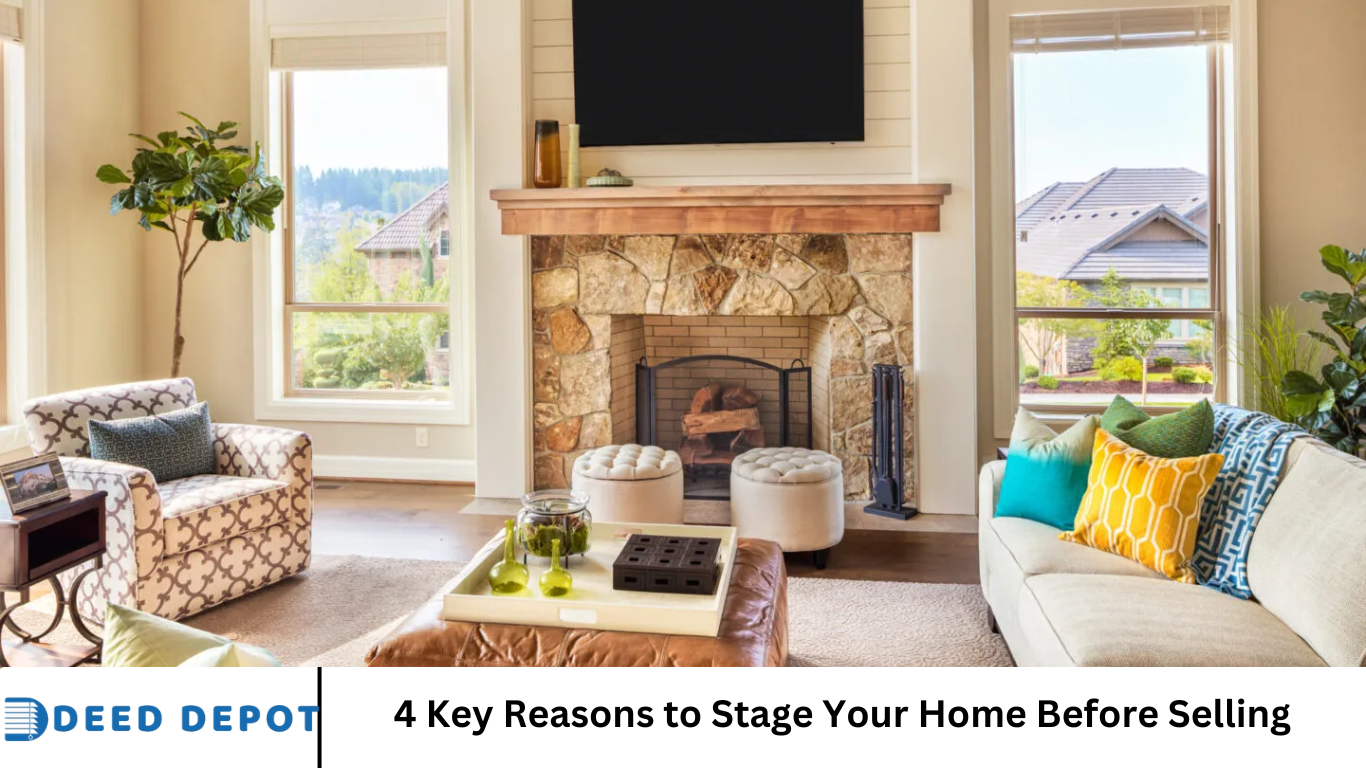Should you stage your home before selling it? The answer is generally yes. Home staging is your chance to make buyers fall in love with your space by highlighting its best features – without a full remodel.
First impressions matter, and staging is a powerful tool that can make your property stand out. Here are four compelling reasons to consider staging your home before listing it for sale.
More Read: 115 Real Estate Blog Topics to Boost Your Online Presence and Attract Quality Leads
Staging can refresh your home’s appeal
Home staging entails decluttering and depersonalizing, as well as rearranging furniture and décor to best compliment the space. Some people choose to upgrade furnishings, while others may hire a professional home stager who can bring in their own items.
Doing these things can instantly give the space a renovated feel, even if it isn’t newly built. This simple approach helps showcase the potential of each room and can make your home more appealing to buyers. To take it up a notch, people often repaint their walls, opting for light and neutral colors, and invest in better lighting to increase brightness throughout the home.
Staging may help increase your sale price
Staging your home can impact its sale price and can potentially benefit your return on investment. After all, when a home appears updated and well-cared for, buyers are likely to want it more.
According to the National Association of REALTORS® (NAR) 2023 Profile of Home Staging report:
20% of sellers’ agents reported an increase of 1%-5% of the price offered by buyers on a staged home in comparison to similar un-staged homes
21% of sellers’ agents reported that staging a home greatly decreased the amount of time the home was on the market
Staging can create the perception of space
A crucial aspect of staging your home is decluttering. Clearing out excess items enhances the visual appeal and can make each room feel larger – a concept especially helpful in smaller dwellings.
Start by optimizing floor space. Then, clear unnecessary items from countertops and store away overly-personal items or mementos. Remember that overcrowded surface areas could distract potential buyers from important features throughout the home.
Staging can inspire buyers’ imaginations
The same report from NAR found that 81% of buyers’ agents said staging made it easier for a buyer to visualize the property as their future home. Staging is essential for helping these prospective buyers to forge that emotional connection, making your home feel like the backdrop for their memorable moments.
To create this bond, keep decorations simple and neutral, allowing the space to feel like a blank canvas for their future rather than a reflection of your past. Scent – adjusted with things like air fresheners and incense – is another way to evoke emotion and make buyers feel right at home.
Staging is part of an effective home-selling strategy – and by thoughtfully curating your home’s appearance, you can leave a lasting impression on buyers and help your house go from “for sale” to “sold.”
Frequently Asked Question
What does home staging actually involve?
Home staging is the process of preparing and decorating a home to make it more appealing to potential buyers. This can include rearranging furniture, adding decor, decluttering, deep cleaning, and sometimes bringing in rented furnishings to highlight the home’s best features.
Does staging really help a home sell faster?
Yes. Studies consistently show that staged homes sell faster than non-staged homes. Staging helps buyers visualize the space as their future home, which can accelerate decision-making and reduce time on market.
Is home staging worth the cost?
In most cases, yes. Professionally staged homes often sell for more money and in less time, which can offset the cost of staging. Think of it as an investment in your home’s marketability.
Can I stage my home myself or should I hire a professional?
You can do basic staging yourself—like decluttering, cleaning, and rearranging furniture—but a professional stager has an expert eye for layout, lighting, and buyer psychology. If budget allows, hiring a pro can yield stronger results.
What are the most important areas of the home to stage?
Focus on the living room, kitchen, primary bedroom, and dining area. These spaces make the biggest impression on buyers. Curb appeal (exterior staging) is also critical—it’s the first thing buyers see.
Is staging necessary in a hot market?
Even in a seller’s market, staging can help you get multiple offers or a higher price. It makes your home stand out from the competition and helps buyers emotionally connect with the space.
What’s the difference between staging and decorating?
Decorating reflects personal style, while staging is about neutralizing and depersonalizing a space to appeal to the widest range of buyers. The goal is to make the home feel welcoming and move-in ready.
Conclusion
Staging your home before selling isn’t just about making it look pretty—it’s a strategic move that can help your property sell faster and for a better price. By creating a space that buyers can emotionally connect with, you increase the likelihood of strong offers and a smoother sale. Whether you go the DIY route or hire a professional, investing in staging is a smart step toward making the best possible first impression. In today’s competitive real estate market, a well-staged home could be the difference between “For Sale” and “Sold.”


